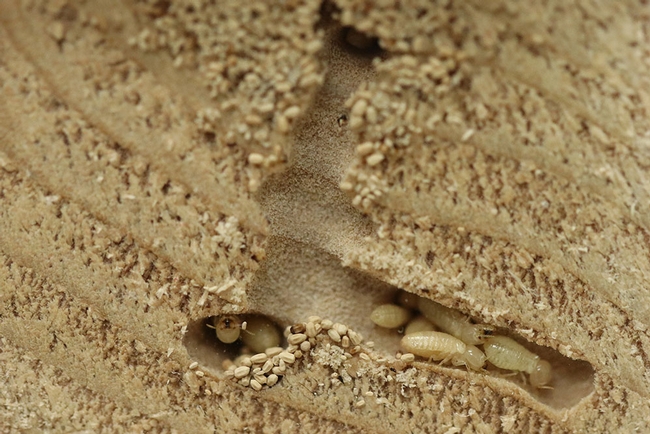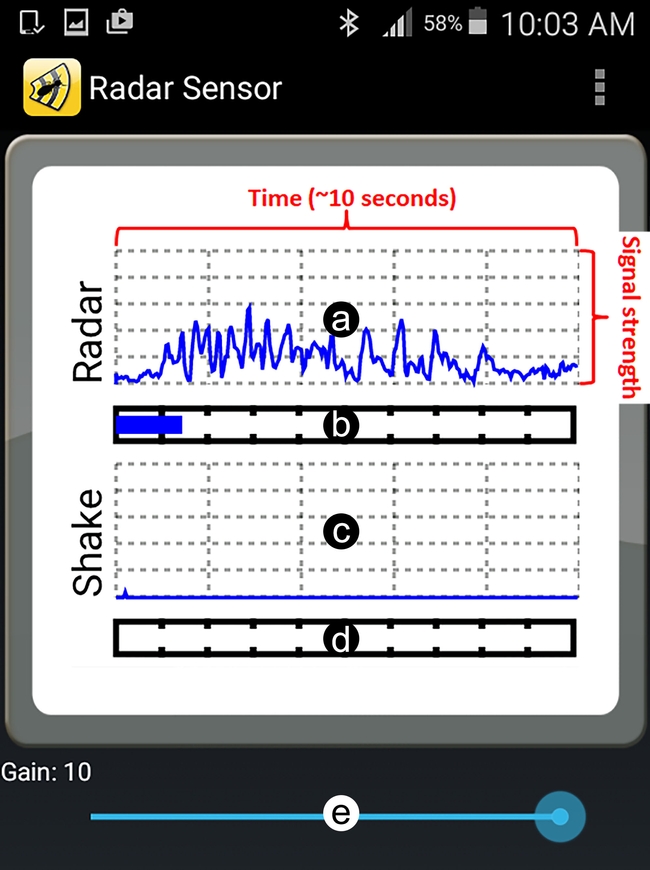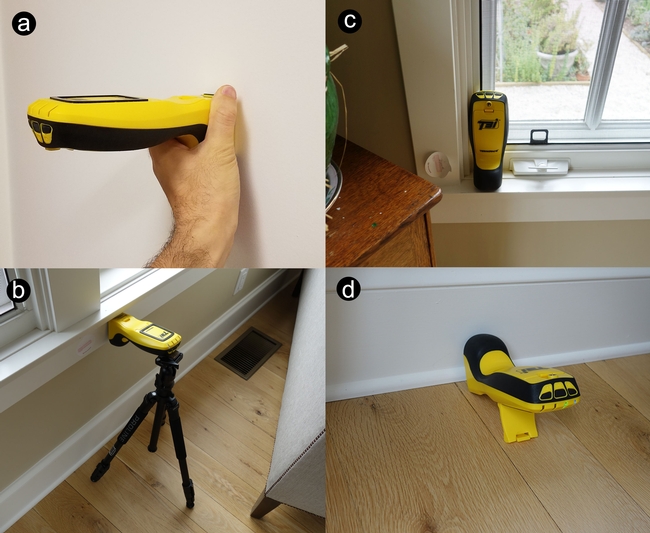Western drywood termites (Incisitermes minor, Figure 1) are important pests of structural wood in California, causing millions of dollars in damage annually. These termites are very cryptic, hidden in their galleries within wood members (pieces of wood), and only emerge during swarming. As a result, wood damage usually goes unnoticed for a long time.
UC IPM Control options are generally categorized as either whole-structure treatment (heat-treatment and fumigation) or local treatments (insecticide injection into the wood, high-power microwaves, electrocution, and other techniques). Despite the high efficacy of fumigation, there has been increasing interest by property owners to use local treatments for eradicating drywood termites. This may be due to the high cost and inconvenience of fumigation.
To learn more about decision-making associated with fumigation, visit urbanipmsocal.com/ipm/termites/ to-fumigate-or-not-to-fumigate. Local treatment of drywood termites can be ineffective because of the difficulty in locating active infestation sites within structures. To address this issue, practitioners and researchers have considered different detection methods using traditional and modern technologies such as borescopes, moisture meters, and heat sensors as well as devices using X-rays, acoustic emission, and low-energy microwaves.
Here we provide a review and some technical details on how to operate a specific device using microwave technology for detecting termite movement in structures.
Termatrac
Termatrac1 is the brand name of a portable device that emits and receives low-energy microwaves to detect tiny movements in wood. This device is currently available as two models: Termatrac T3i All Sensor and Termatrac T3i Radar Only. Termatrac All Sensor includes a microwave emitter/sensor, a moisture meter, and a thermal sensor. The Radar-Only version, however, includes only the microwave technology (“radar”). Both devices generate a line graph output that represents termite movement within wood
Although such output can be informative, interpreting the results might not always be easy and may also require considerable expertise. First, the output's line graph may represent detection of non-termite objects or the user themselves (body movement or hand shaking while holding the device). Second, the signal intensity varies depending on the depth of termite activity, so Gain settings may need to be adjusted for higher or lower sensitivity. Third, the relationship between termite density (number of termites per unit of area) and signal strength is not easily understood by users (Figure 3). Fourth, termites may not be present or active during inspection and this may lead to a false negative conclusion (concluding “no termites” when they are present) when inspecting an infestation. To address these issues, field and lab research experiments were conducted in California to evaluate the efficacy of the Termatrac device and to help termite inspectors accurately interpret the output signal.
Termatrac can be used in different positions (see Figure 4):
- hand-held with radar surface flush against the inspection surface
- mounted on a tripod with radar surface flush against the inspection surface
- resting on a horizontal surface with radar surface flush against the inspection surface
- with radar at 45° angle to the inspection surface using the back flap or a tripod
Field studies revealed that hand-held uses produce less accurate results than tripod/flap supported uses due to user hand shaking. Also, the device's output showed more noise (noise refers to a detected signal in the output that is not coming from drywood termites) from the user's body movement when used at 45° to the inspection surface as compared to flush against the inspection surface (Taravati 2019).
Recommendations
For optimal readings, Termatrac users should keep the following in mind. Users need to stand still when reading the output or the device will pick up their body movement and produce a false positive signal. This is especially true at high sensitivities. Users also need to ensure that there are no moving objects (vehicles, plants swaying with the wind, airborne debris such as leaves and dusts, children, or animals (such as pets and birds) on the other side of the inspection surface (a wall for instance) which may create false positive signals. Also, water passing through pipes behind inspection surfaces may produce a strong signal. However, heavy machinery around the experiment sites did not produce any detectable noise despite being very loud. The device should not be used to inspect unstable surfaces or non-fixed objects (e.g. yard fence) since these situations will increase the chance of false positive signals and inaccurate detection of termites. To save time and increase accuracy when inspecting standard interior walls, users should first try to locate studs using a stud finder and then use Termatrac on those areas only. Users may also choose to focus on wooden window frames and windowsills since these have been observed to be one of the most common spots where drywood termites are detected in homes.
Findings
Lab studies showed that higher densities of termites may not necessarily produce stronger signal (Figure 3).
At the highest sensitivity setting, Termatrac T3i was able to detect a single drywood termite behind 5 cm (2 inch) of wood and 1.3 cm (0.5 inch) of drywall (total thickness of test “wall”: 6.3 cm / 2.5 inch). Drywood termites move within their galleries continually and therefore may not be present in all gallery regions at all times. Furthermore, termite activity may change throughout the day depending on temperature and other factors (Figure 5). As a result, if you suspect an active infestation in a wall but are not getting a detectable Termatrac signal, it is worth moving on to other areas and then returning in a few minutes to reinspect the suspect location.
This structural wood member contained 47 live termites. (from Taravati, 2019) To conclude, Termatrac can be very useful in some termite detection. Like other termite detection devices, Termatrac has limitations and requires training and experience before a user can efficiently and accurately detect termites. With this said, an experienced Termatrac user can obtain valuable information about termite presence and activity when the infested wood members are in accessible locations.
1 Mention of a product does not constitute an endorsement.
This article was originally published in Winter 2020 issue of The Green Bulletin.



